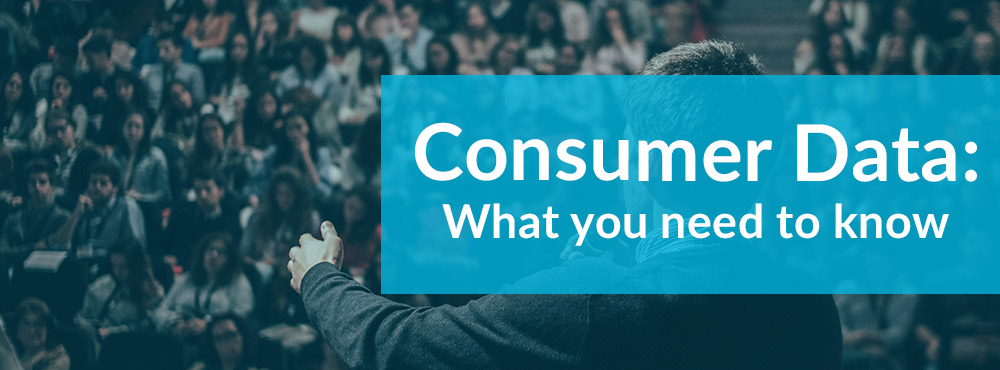I’m fairly confident that if you’re reading this blog you will have some understanding of demographic data, perhaps you even have experience of putting it use. But what about psychographics and behavioural data?
The truth is that consumer data is incredibly valuable, and by choosing to ignore it, you’ll be falling behind your competitors that are already putting it to use. Research from McKinsey found businesses that use consumer data outperform their competitors by 85% when it comes to sales growth.
Below is a summary of each data type, where you can obtain it and how to begin using it in your marketing strategies and audience personas.
Demographic data
Demographic data is statistical data that provides an insight into the characteristics of your target audience. This includes details such as (but not limited to) age, gender, marital status, family structure/circumstance, education, income and location.
For example, you could begin to build your audience persona using the following information:
- Female
- 20-45
- Married, two young children
- Located in Cambridgeshire
- Works full time, earning £35,000 a year
This is all concrete information that can help you narrow down the type of content that you create. It also helps you build the correct audiences for paid social or account-based campaigns.
How to obtain demographic data
You can use analytical tools such as Google Analytics, and your social media analytics, to profile your existing audience. These sources will provide information with regards to the location of your audience, age – segmented into seven age ranges – and gender. Social media platforms can provide further information. For instance, B2B platform LinkedIn will provide information on the role, seniority and industry in which your audience sits.
There are also third-party sources available, such as YouGov or Experian.
Psychographic data
I like to think of it like this – if demographic brings the ‘who’, then psychographic brings the ‘why’.
Psychographic looks at the behavioural characteristics, interests and values of your audience; the elements and subjective reasons that are driving them towards your product or service.
Psychographic data includes information such as lifestyle, social class, principles and beliefs, emotions, activities and interests. These elements help businesses understand the reasoning behind a purchase decision; the goals, habits, values and challenges that the audience are experiencing that are driving them to spend money.
Using psychographic data, you could add the following details to the audience persona created above:
- Wants a healthy lifestyle, but time poor
- Favours high quality items, but takes time to research items before purchasing
- Time online occurs in the evenings
- Interested in her family’s health, favours natural products
- Is active and enjoys working out, Pilates and yoga
- A fan of Pinterest and follows fashion and interior influencers online
- Cares about the environment and concerned about climate change
Psychographic data can help marketers make their brand, product or service more aligned with their audience.
For instance, the above persona might be interested in natural, wholesome products when it comes to food and household cleaning. Additionally, she might have an interest in sustainable brands that give back to communities or the environment and use recycled packaging. She cares about aesthetics and would commit to making expensive purchases if they helped keep her home tidy and saved her time – this would apply to home appliances.
Psychographic data can also help you shape the messaging, language and tonality used in your marketing.
How to obtain psychographic data
To acquire psychographic information, you can use two sources: existing clients or customers and online analytics.
When it comes to clients and customers, obtaining the information can be done through interviews or surveys. Asking questions such as:
- What were your last 5 purchases and why?
- What motivates you?
- How would you spend your perfect weekend?
- What is your favourite destination/restaurant/brand?
- What New Year’s resolutions have you previously made?
- Do you have any life goals that you want to achieve? What are you doing to help you achieve them?
- If you could do one thing to improve the quality of your life, what would it be?
These open-ended questions enable you to uncover an individual’s lifestyle choices, values, personality quirks and interests.
You can use analytics platforms such as Google Analytics or social media analytics to uncover some of these details. You may be able to uncover some information that will help you – such as affinity categories – but nothing beats going straight to the source.
Behavioural data
Behavioural data is generated as a result of an action or activity that has taken place. This data includes intentions, previous purchase choices, online searches, payment circumstances, geolocation and even devices someone uses.
This data is gathered for marketers to segment and target audiences in an extremely focused way, based on users’ patterns of engagement and actions they take. These actions reveal their true motivations and purchasing style.
Behavioural data includes information such as –
- How many times the user visited your site?
- How did they navigate around your site?
- Did they use a discount code or download any content you offer?
- What research did they carry out prior to purchasing/converting?
- Was there anything significance around the occasion or timing of their purchase?
- What device are they using?
Behavioural data helps businesses to better understand the buyer journey. With this, marketers can create content and messaging to shorten this journey.
Using this data, you might be able to bolster your audience profile with information like:
- Visits websites an average of 3-5 times before converting
- Likes to know more about a company before committing – looks at several pages
- Likes to look at customers review before purchasing
- Compares prices on other websites
- Uses discount codes on first purchase
You can also use this information to serve up ads and conversion tactics at the right time.
Details such as ‘device’ might at first glance be insignificant. However, it provides an insight into the purchases your audience make and provides an indication of brand affiliations and the amount of money they are prepared to spend. This has the potential to be at the disadvantage of the audience. For instance, hotel brands and holiday operators have been known to target Mac users with more expensive options than they would serve up to a user operating from a PC.
How to obtain behavioural data
Your website’s analytical platform will provide much of this data, and specialist plug-ins can harvest unstructured data. As the collection and processing of data continues to come under scrutiny, businesses are facing more of a challenge as website users are choosing to opt out of having their data tracked and recorded.
By using the data we can track, marketers and businesses can provide the content, experiences and product or service that is truly relevant to their audience. This omits the need for general, ‘catch all’ messages. Instead of making predictions, we can use this data to understand the lives of our customers and what is driving their decisions.





